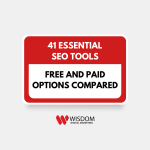
In today’s digital age, the advertising landscape has undergone significant transformation. The proliferation of social media, search engines, and other online platforms has made digital advertising an essential component of modern marketing strategies. Understanding this landscape is crucial for businesses aiming to effectively reach their target audience and achieve measurable results.
Digital advertising encompasses various channels, including display ads, social media advertising, search engine marketing, video ads, and more. Each channel offers unique opportunities for engaging potential customers. The advent of programmatic advertising has revolutionized ad buying and selling, enabling more targeted and personalized campaigns.
The digital advertising landscape is dynamic, with new platforms and technologies emerging regularly. The increasing prevalence of mobile devices has shifted advertising strategies towards mobile-friendly formats and targeting options. Additionally, growing concerns about data privacy and consumer consent have led to changes in data collection and usage practices for targeting and personalization.
Staying informed about the latest trends and technologies in digital advertising is essential for businesses to make informed decisions about budget allocation. This knowledge allows companies to adapt to changes, such as the emphasis on mobile advertising and evolving data privacy regulations. By keeping abreast of industry developments and best practices, businesses can maximize the impact of their digital advertising efforts and effectively reach their target audience.
Key Takeaways
- Digital advertising landscape is complex and constantly evolving
- Clear goals and KPIs are essential for measuring the success of digital advertising campaigns
- Targeting the right audience is crucial for maximizing the impact of digital ads
- Compelling and relevant ad content is key to capturing audience attention and driving engagement
- Data and analytics are valuable tools for optimizing digital advertising campaigns
- A/B testing helps in identifying the most effective ad variations
- Continuous monitoring and adjustment of campaigns is necessary for ongoing success in digital advertising
Setting Clear Goals and KPIs
Defining Realistic and Specific Goals
When setting goals for a digital advertising campaign, it’s essential to be specific and realistic. Whether the goal is to drive website traffic, generate leads, or increase sales, having a clear target in mind will guide the rest of the campaign strategy. Setting KPIs that align with these goals provides a measurable way to track progress and determine the campaign’s effectiveness.
Aligning the Team Around a Common Objective
Setting clear goals and KPIs helps align the entire team around a common objective. By clearly communicating the goals and KPIs of a digital advertising campaign, everyone involved can work towards the same outcome. This alignment is crucial for ensuring that all aspects of the campaign, from targeting to ad creative to optimization, work together towards a common goal.
Monitoring Progress and Optimizing Efforts
Having clear goals and KPIs in place provides a benchmark for evaluating the campaign’s success and making adjustments as needed. By regularly monitoring progress against these KPIs, businesses can identify areas for improvement and make data-driven decisions about how to optimize their digital advertising efforts.
Targeting the Right Audience

One of the key advantages of digital advertising is the ability to target specific audiences with precision. By leveraging data and targeting options available on platforms like Facebook, Google Ads, and programmatic ad networks, businesses can ensure that their ads are reaching the right people at the right time. When it comes to targeting the right audience, businesses should consider factors such as demographics, interests, behaviors, and even past interactions with their brand.
By understanding who their ideal customers are and where they spend their time online, businesses can tailor their digital advertising efforts to reach these individuals effectively. Moreover, targeting the right audience also involves understanding the customer journey and tailoring ad messaging accordingly. For example, businesses may want to create different ads for individuals who are in the awareness stage versus those who are further along in the consideration or purchase process.
By delivering relevant messaging to each stage of the customer journey, businesses can increase the likelihood of driving meaningful actions from their target audience. Additionally, retargeting is a powerful tactic for reaching individuals who have already shown interest in a business’s products or services. By serving ads to individuals who have visited a website or interacted with previous ads, businesses can stay top-of-mind and encourage these individuals to take the next step towards conversion.
Creating Compelling and Relevant Ad Content
| Metrics | Value |
|---|---|
| Click-Through Rate (CTR) | 5% |
| Conversion Rate | 10% |
| Engagement Rate | 15% |
| Ad Relevance Score | 8/10 |
In the crowded digital landscape, creating compelling and relevant ad content is essential for capturing the attention of potential customers. Whether it’s a display ad, social media ad, or video ad, businesses need to ensure that their ad creative is engaging and resonates with their target audience. Compelling ad content should be visually appealing, concise, and communicate a clear value proposition.
Additionally, ad content should be tailored to the platform it’s being displayed on, taking into account factors such as ad format, placement, and user behavior. Furthermore, creating relevant ad content involves understanding the needs and pain points of the target audience. By addressing these needs directly in ad messaging, businesses can increase the relevance of their ads and capture the attention of potential customers.
Additionally, personalization is an effective tactic for creating relevant ad content. By leveraging data such as past purchase history or website interactions, businesses can deliver personalized ad content that speaks directly to the individual interests and preferences of their target audience. Ultimately, creating compelling and relevant ad content is crucial for driving engagement and motivating potential customers to take action.
Utilizing Data and Analytics for Optimization
Data and analytics play a crucial role in optimizing digital advertising campaigns for success. By leveraging data from platforms like Google Analytics, Facebook Ads Manager, and other tracking tools, businesses can gain valuable insights into how their ads are performing and where there are opportunities for improvement. For example, by analyzing metrics such as click-through rate, conversion rate, and cost per acquisition, businesses can identify which ads are driving results and which may need to be adjusted.
Moreover, utilizing data and analytics also involves understanding customer behavior and preferences. By analyzing data on website traffic, user interactions, and conversion paths, businesses can gain a deeper understanding of how potential customers are engaging with their brand online. This insight can inform decisions about ad targeting, messaging, and overall campaign strategy.
Additionally, A/B testing is a valuable tactic for utilizing data and analytics to optimize digital advertising campaigns. By testing different ad variations against each other, businesses can gather data on which messaging or creative resonates most with their target audience and use this information to refine their campaigns for maximum impact.
Implementing A/B Testing

A/B testing is a powerful tool for optimizing digital advertising campaigns by comparing two versions of an ad to determine which performs better. By testing different elements such as ad copy, imagery, calls-to-action, or targeting options, businesses can gather valuable data on what resonates most with their target audience.Informing Data-Driven Decisions
A/B testing allows businesses to make data-driven decisions about which ad variations are most effective at driving results.
Uncovering Customer Insights
Furthermore, implementing A/B testing also provides insights into customer preferences and behavior. By analyzing the results of A/B tests, businesses can gain a deeper understanding of what motivates potential customers to take action. This insight can inform future ad creative and messaging strategies to better align with customer preferences.
Driving Continuous Improvement
Additionally, A/B testing provides an opportunity for continuous improvement by identifying areas for optimization and refinement within digital advertising campaigns.
Continuously Monitoring and Adjusting Campaigns
Continuously monitoring and adjusting digital advertising campaigns is essential for maximizing their impact. By regularly reviewing performance metrics and making adjustments as needed, businesses can ensure that their campaigns are delivering results. This may involve pausing underperforming ads, reallocating budget towards top-performing ads, or making changes to ad creative or targeting based on insights gathered from data.
Moreover, continuously monitoring and adjusting campaigns also involves staying agile in response to changes in the market or consumer behavior. For example, if a new competitor enters the market or consumer preferences shift towards a different platform or ad format, businesses need to be prepared to adapt their digital advertising strategy accordingly. By staying proactive and responsive to changes in the landscape, businesses can maintain a competitive edge and continue driving meaningful results from their digital advertising efforts.
In conclusion, understanding the digital advertising landscape is crucial for businesses looking to effectively reach their target audience and drive results. Setting clear goals and KPIs provides a roadmap for measuring success and aligning the team around a common objective. Targeting the right audience involves leveraging data and understanding customer behavior to reach potential customers with precision.
Creating compelling and relevant ad content is essential for capturing attention and motivating potential customers to take action. Utilizing data and analytics provides valuable insights into campaign performance and customer behavior for optimization. Implementing A/B testing allows businesses to make data-driven decisions about ad creative and messaging strategies.
Continuously monitoring and adjusting campaigns ensures that digital advertising efforts are delivering results in an ever-evolving landscape.
FAQs
What is digital advertising?
Digital advertising is a form of marketing and advertising that uses the internet and digital technologies to deliver promotional messages to consumers. This can include display ads, social media ads, search engine marketing, and more.
How does digital advertising work?
Digital advertising works by using various online platforms and technologies to target specific audiences with promotional messages. This can be done through the use of cookies, targeting specific demographics or interests, and utilizing algorithms to display ads to relevant users.
What are the benefits of digital advertising?
Some benefits of digital advertising include the ability to target specific audiences, track and measure the performance of ad campaigns, reach a global audience, and adjust ad campaigns in real-time based on performance data.
What are the different types of digital advertising?
There are several types of digital advertising, including display advertising (banner ads, pop-up ads), social media advertising (ads on platforms like Facebook, Instagram, and Twitter), search engine marketing (pay-per-click ads on search engines), video advertising, and native advertising.
What are some best practices for digital advertising?
Best practices for digital advertising include defining clear campaign objectives, targeting the right audience, creating compelling ad content, optimizing for mobile devices, and continuously monitoring and adjusting ad campaigns based on performance data.
What are some common metrics used to measure the success of digital advertising campaigns?
Common metrics used to measure the success of digital advertising campaigns include click-through rate (CTR), conversion rate, cost per acquisition (CPA), return on ad spend (ROAS), and engagement metrics such as likes, shares, and comments on social media ads.





